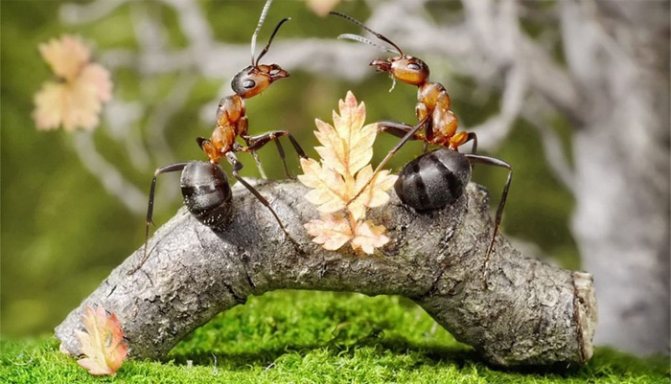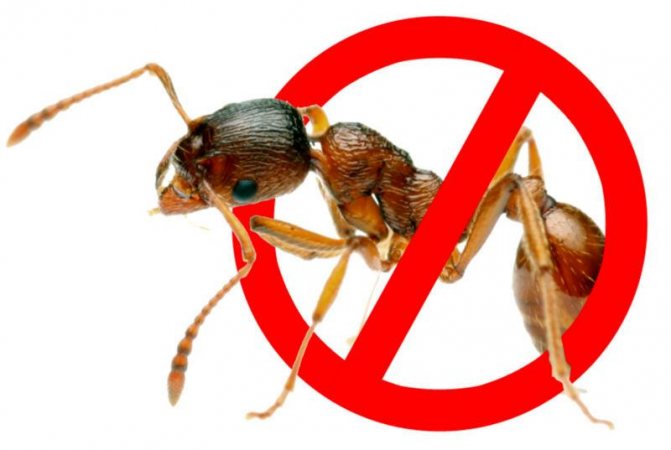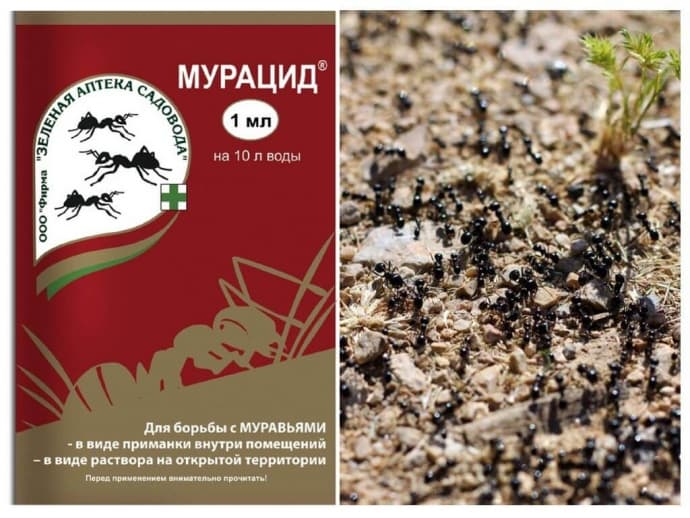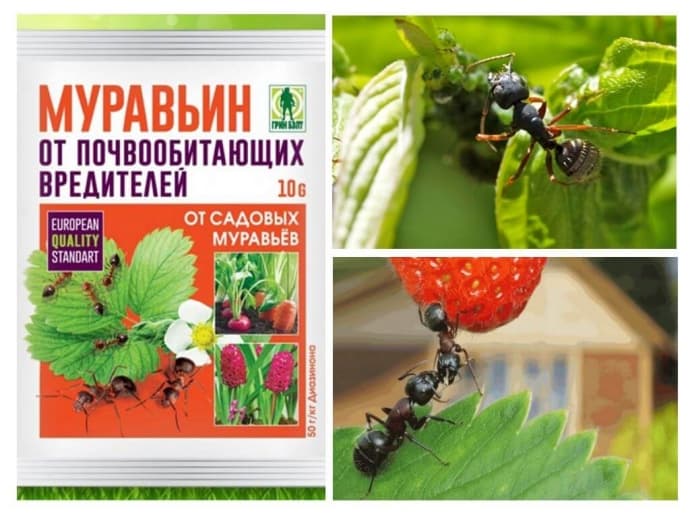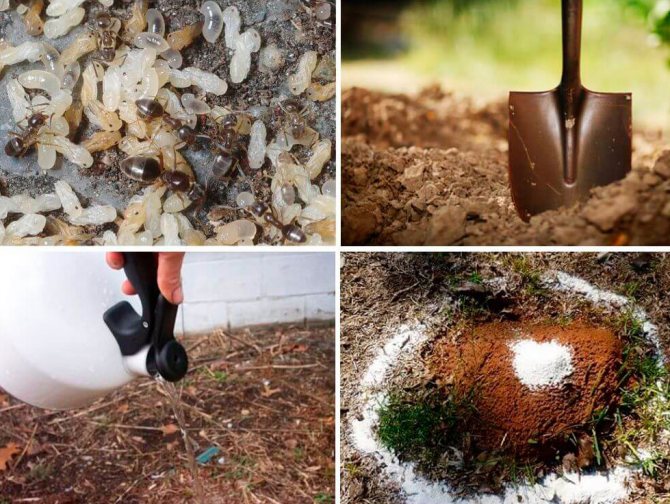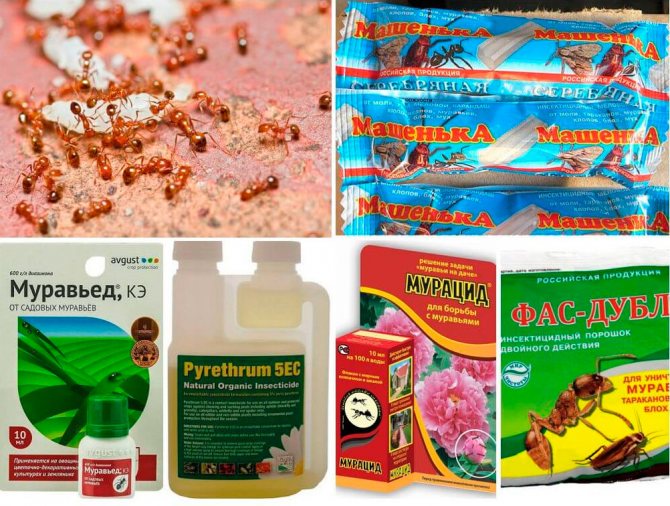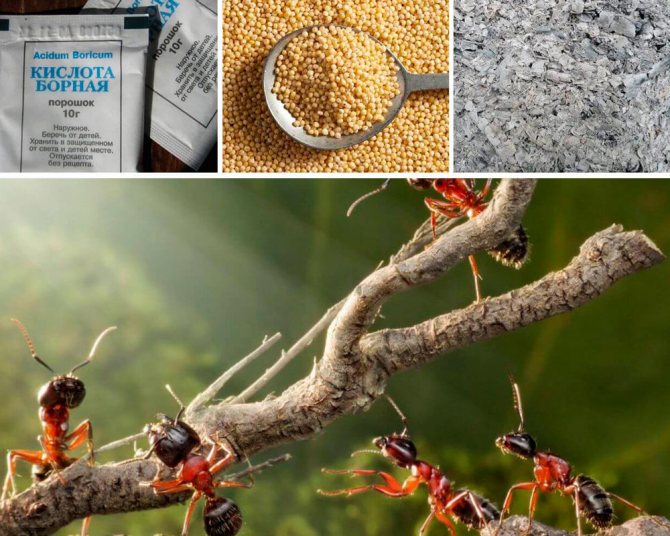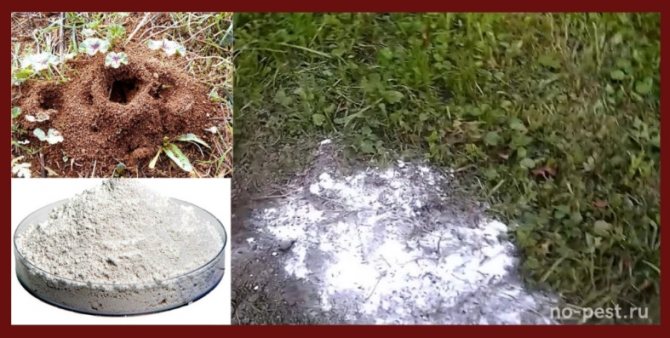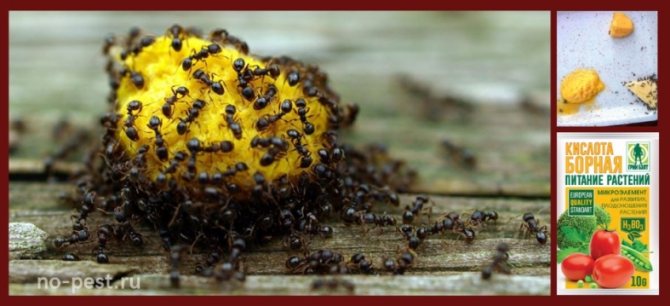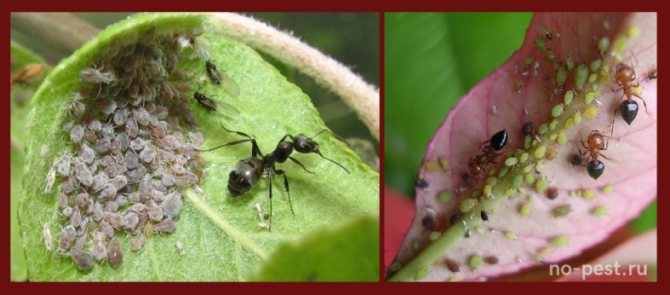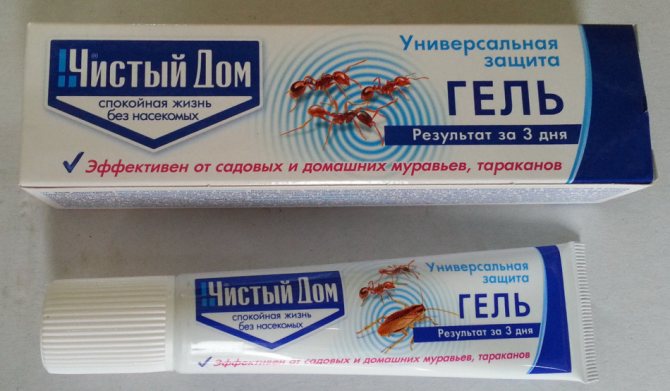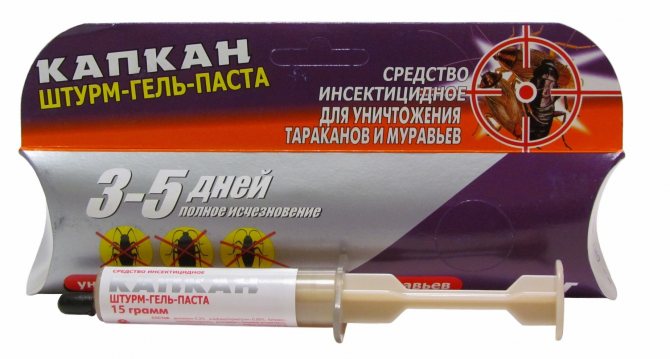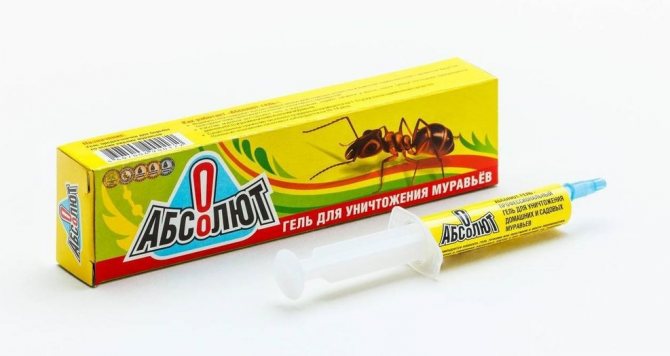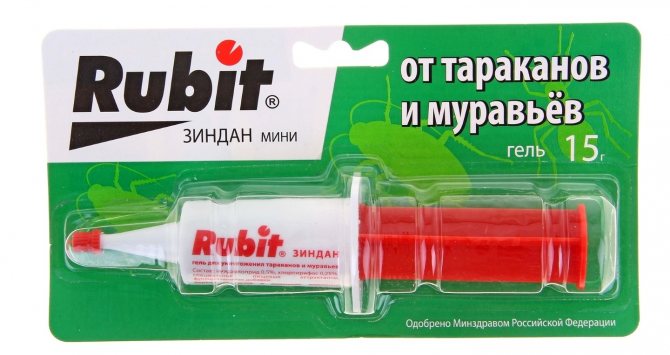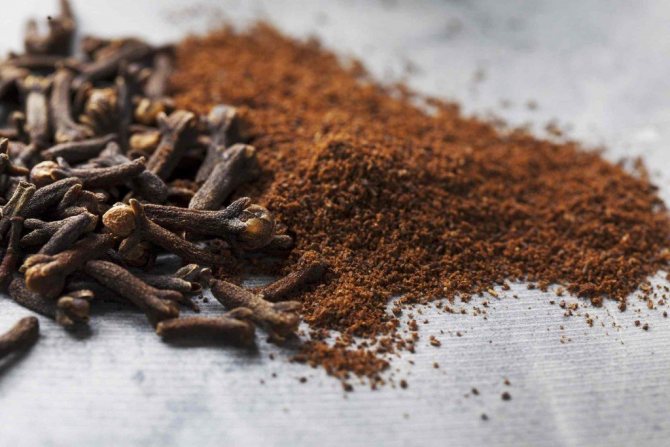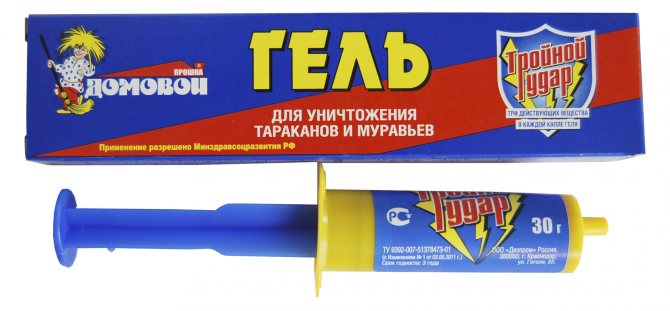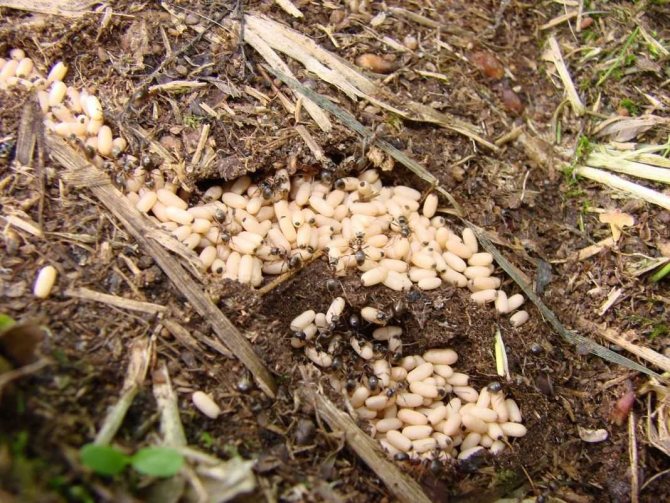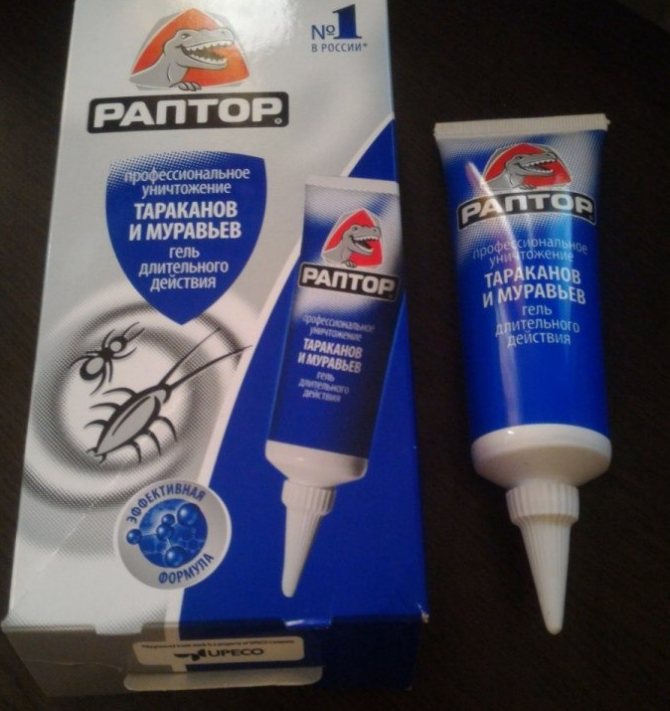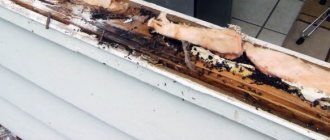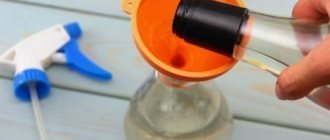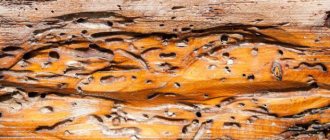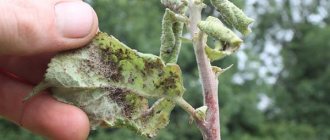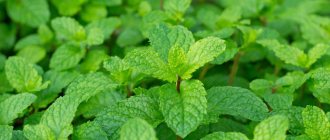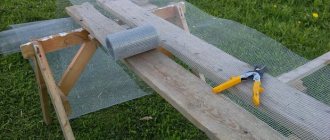A garden is a small ecosystem in which well-groomed cultivated plants surrounded by the care and attention of the owner attract, unfortunately, not only beneficial insects. As soon as spring comes, pests announce a general mobilization in their ranks and begin to attack everything that seems edible to them. Garden ants are one of the most persistent, voracious and difficult to drive out harmful insects. In this article, we will tell you about the harm ants do to gardens and vegetable gardens and how to cope with them.
Where do ants come from in the garden
Forest ants come from the nearest forest. They do not stay in the garden for a long time, and by the evening they must return to the anthill. Garden ants settle directly in the garden: in a rotten stump, under the roots of trees or in the ground, sometimes right in the beds. They usually come from neighboring land plots.
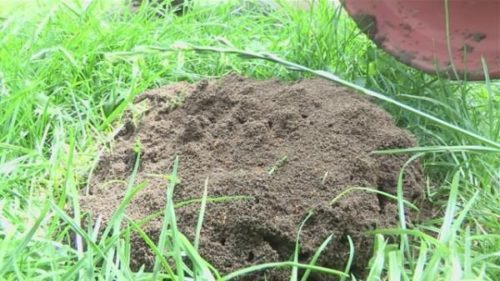
These tenacious insects constantly migrate in small groups from place to place in search of food, and when they find a suitable territory, they settle on it. The abundance of edible plants contributes to their high fertility. These insects build multi-level underground nests in which they feel comfortable in any season of the year. If you do not take the ants out of the garden before the onset of autumn, they will successfully overwinter and in the spring they will again begin to cause trouble.
In favor of the ants
In the process of vital activity, ants bring considerable benefits; in places where anthills are built, there is a concentration and accelerated decomposition of plant residues, aeration and improvement of the water regime and soil structure. The soil is enriched with humus and elements important for plants (phosphorus, nitrogen, potassium, magnesium, etc.) in forms accessible to plants. And also do not forget the predatory and collecting activity of ants. Ants that settle in wood or include old stumps in their nests participate in the mechanical destruction of dead wood, thereby accelerating the process of its decomposition. Red forest and thin-headed ants collect wood and herbaceous particles, twigs, needles, scales, blades of grass, etc. from the territory surrounding the nest, concentrating them in anthills, where the decomposition of these particles is much faster than on the soil surface.
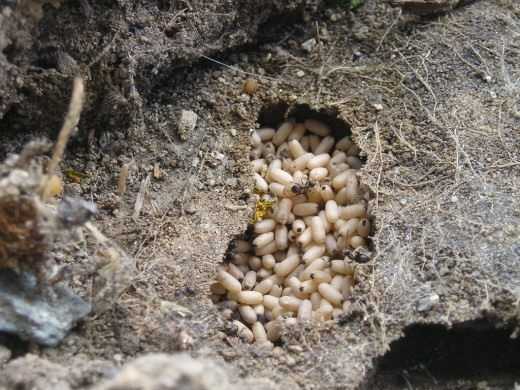

Anthills are centers of increased soil fertility... Small nests are micro-foci; large nests are macro-foci that are already perceptible with standard accounting methods.
In the extraction of ants, harmful insects predominate... During mass reproduction, pests in the prey of ants make up 90% or more.
And yet, no matter how useful ants in suburban areas are, they annoy us, breed aphids on our favorite roses and other plants, and dig in paths.
Why are ants in the beds dangerous?
Like garden ants, forest ants visit vegetable gardens in search of food. But the danger is primarily posed by sedentary populations of garden ants, because they:
- They spoil the roots, fruits and leaves of plants, gnaw on edible roots (carrots, beets and others).
- Aphids are bred near their nesting site to feast on the syrup that it secretes. And the aphid actively eats all the edible parts of plants in the garden.
- They become the cause of bacterial contamination of soil and plants, as they actively spread bacteria on their paws throughout the garden.
It may be enough to scare off forest ants from the site, while blacks in any case must be completely destroyed along with the nest and the queen (the queen ant that lays eggs).
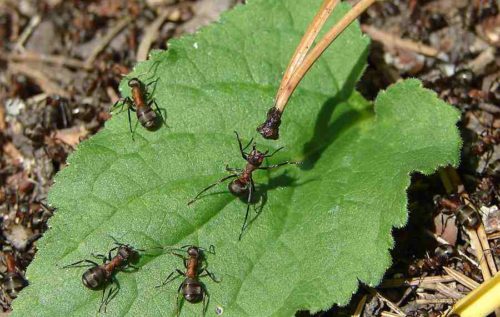

The benefits and harms of ants
Agronomists were divided. Some of them stand up for insects, considering them useful, others recommend removing ants. The gardener, having listened to the opinions of experts, must choose his own attitude towards ants.
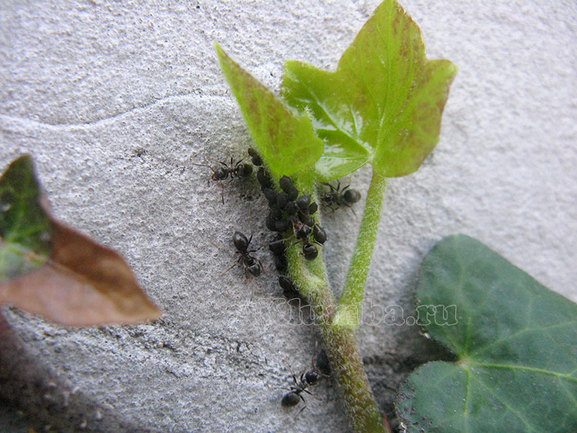

Useful qualities of ants:
- Soil fertility. Ants saturate the soil with oxygen and nutrients. They, like worms, break through passages in the soil to a depth of one and a half meters. This promotes ventilation of the plant roots. Moisture is retained in the soil, which contributes to its fertility. Insects enrich the soil with potassium, phosphorus in the capacity in which it is perceived by plant roots.
- Getting rid of insects. Black ants of the same family destroy more than 2 thousand eggs of flies, larvae, slugs, caterpillars and spiders per day.
Ant harm:
- Ants spoil fruits, vegetables, plants and roots. They gnaw fruits underground, extracting sweet juice. Vegetables with sugar content are especially affected. First of all, these are berries, carrots and pumpkin.
- Ants, in addition to vegetable, love sweet flower juice. When the petals are damaged, the flowers wilt or become sick.
- Ants increase the acidity of the soil. Breaking through the underground passages, ants saturate it not only with nutrients, but also with acid. Then it is difficult for vegetables and fruits to develop.
- By releasing milk, they attract aphids to the site. In addition, they protect aphids, which contributes to their spread and growth.
- These insects can occupy a garden tree, break through many passages in it. After a couple of years, only dust remains from the tree.
How to get rid of forest ants on the site
If you got a land plot with an anthill of forest ants located on it, you will have to move or destroy this anthill. It will only be possible to transfer a small anthill, it is impossible to do this with a large and old one.
To move the anthill, you need to carefully remove its top with a shovel and carefully dig out the central part with the queen, eggs and larvae, as well as a small number of adult worker ants. The excavated part must be put in a bag and taken away to the forest, choose a suitable place there, dig a small hole and place an anthill in it.
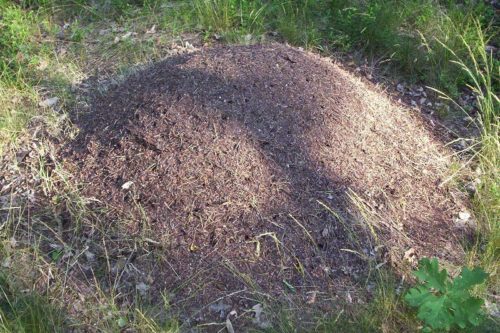

To destroy an anthill on the site, you can:
After any of the above measures, the anthill and the soil under it must be carefully dug up. In this case, it is advisable to first cover the earth with ash, so that when digging up the ash and the earth are mixed.
Biological agent and prevention
Big red ants know how to get rid of ants in the vegetable garden and garden. If you populate these forest dwellers on a summer cottage, they will arrange a conspiracy and evict the gardeners. To the question of how to get rid of ants in the garden and summer cottage, the answer is - timely protection and prevention. This will make it easier to control pests.
To avoid being disturbed by anyone, garden ants settle on poorly cultivated soil. If you frequently dig up the ground in the garden, around trees, in flower beds and in the vegetable garden, you can prevent the appearance of such intruders. In early spring, you can treat each tree trunk with hard lime and the soil around the tree. Such prevention and useful folk remedies will greatly increase the yield in your garden and allow you to admire a blooming and fertile garden.
How to protect your garden from ants
Ants most often settle in neglected, overgrown with grass gardens. They really do not like when they are disturbed, so it is useful to regularly loosen the soil and dig up the beds several times during the summer season.
Tall grass around the beds and around the perimeter of the garden must be mowed down, and the weeds must be carefully weeded out. If there are stumps in the garden, they need to be uprooted. It is important not to allow the planting to thicken, that is, to plant the plants at a sufficient distance from each other, or thin out if they grow densely.
To prevent ants from crawling along the trees standing next to the beds, their trunks must be whitewashed with a steep solution of slaked lime. It is also useful to process the soil in the near-trunk circles with lime so that ants cannot settle under the roots of trees.
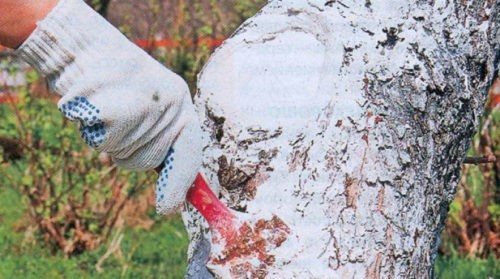

Ants are afraid of the smell of plants such as:
Ants in the beds will not start if you plant these odorous plants next to the plantings and around the perimeter of the entire garden. You can use the crushed parts of these plants - just lay them out in the garden. Insects will bypass such a plot of land.


Agrotechnical measures
It may be a little unusual, but the number of colonies will decrease significantly if you eliminate the aphids. By the way, you don't need to get rid of the ants completely. In their place will come new, more adapted pests. Aphids are the main "herd" supplying "sweet milk" - fall to the gluttonous larvae of ants.
The duration of maturation of the egg lasts 35 days, the larva - 7 days, and the pupa - 23 days. The life span of the larvae is 7 days and they pass into the pupa stage, which stops eating. These 7 days are the weakest link in the ant colony. They intensively supply food to the larvae. If during this period the larvae are fed with poisoned food, the colony may not revive.
So, for the successful removal of ants from the site, the following procedures can be done with large colonies:
In late autumn and early spring, it is imperative to whitewash the stems and skeletal branches of horticultural crops with a thick solution of freshly slaked lime with the addition of any toxic substance. With this technique, you will destroy the ants dragging their precious cargo from the trees to the anthill for overwintering.
Around the bushes, stepping back from the base, sprinkle ash thickly in a ring, you can mix it with lime. Lime is poisonous for ants.
Approximately in the middle of the trunk (40-80 cm), fix the trapping belts by treating them with insecticidal agents. To prevent ants from crawling over the barrier, grease the bole around the perimeter with a special slow-drying glue (buy in a store). They will not be able to overcome the glue barrier and will perish along with the expensive burden. Fishing belts can be used in the spring-summer period (October and March), periodically replacing them with fresh ones.
Simultaneously with the hunting belts for 8 days in a row, having dug a colony of ants to a depth of 3-8 cm, poison them in the evening (when the ants return home), pouring hot boiling water over the anthills, pouring hot broth of tomato tops (literally boiling).
It can be dug up and covered with a mixture of ash and lime or ash and salt, or treated with a mixture of ash and soda.
A good result is obtained if you fill the anthill with a mixture of water and kerosene (100-200 ml per 10 liters of water), digging it deeper.
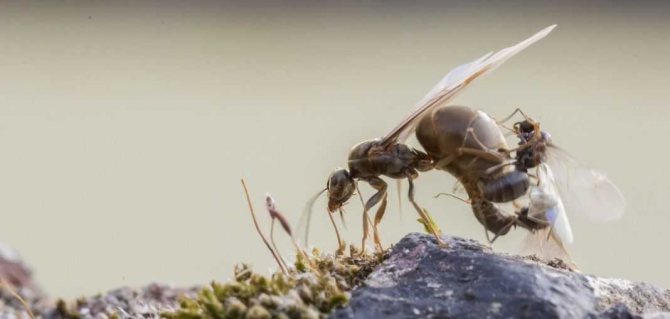

Large winged female and male black garden ant.
Daily processing for 8 days will destroy the larvae, some of the adult ants, possibly the "queen", eggs, pupae. Such treatments must be carried out systematically throughout the year, and the ants will leave the inhospitable dacha. Ants love peace and settle in places where the soil is not subjected to frequent tedding, that is, it is not dug up, stones, weeds, etc. are not removed.If you run a farm without digging, then surface treatment of the top 10 cm of the soil layer is required. Look under a long-lying stone or cardboard, board and you will see a bunch of ant eggs with nannies right on the surface of the earth.


Black garden ant and aphids.
Plantings around the perimeter of the summer cottage, individual beds, under the crown of trees and, especially, between berry bushes of tansy, parsley, mint, valerian, wormwood, lavender, garlic can serve as preventive preventive measures against the colonization of ants.
On a note!
garlic in the aisles of strawberries / strawberries and between berry bushes saved the berry areas from ants and at the same time from some fungal diseases.
An important condition is the destruction of aphids
Ants and aphids coexist well in the beds. Where there are aphids, ants are sure to turn up. And vice versa - ants contribute to the appearance of a huge number of aphids, because they protect this aphid and protect it from predatory insects. To get a good result, you need to destroy both aphids and ants at the same time.
And in order to prevent it, it is important to observe the frequency and dosage of watering, to treat the seeds and seedlings before planting in open ground with a suitable disinfectant. Aphids love waterlogged soil, and reproduce faster on it. If you water the garden in moderation, there will be no favorable conditions for its development. And it is necessary to treat seeds and seedlings with disinfecting drugs in order to exclude the possibility of aphid eggs entering the soil.


What harm can these insects do?
Carpenter ants can cause serious damage to a wooden house, literally turning it into dust in severe cases. Forest ants accidentally brought into the apartment can bite a person. The bites of these insects are quite painful, but if you do not have allergies, then this is not dangerous, and in some cases even useful, because it is not in vain that formic acid is included in many medicines.
The bite of a red fire ant can be dangerous to human life. But this insect does not live on the territory of Russia.
Pharaoh ants are extremely annoying. If they start up in an apartment, they can meet in any product. But the most dangerous thing is that they can be carriers:
- dysentery;
- typhoid fever;
- diphtheria;
- cholera;
- anleukopenia of cats;
- parvovirus enteritis;
- plague of dogs.
Also, ants can carry eggs of worms. Therefore, food spoiled by ants must be destroyed. These insects sometimes cause malfunction of electrical appliances and short circuits in electrical networks, arranging nests in them.
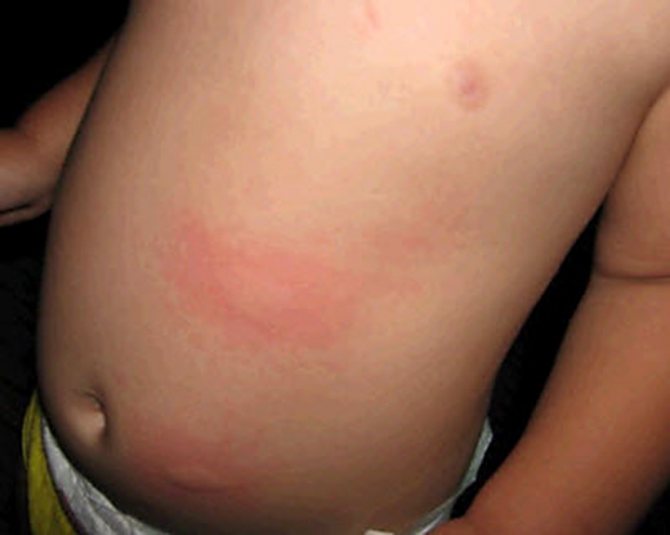

An ant bite can be very painful, especially children are sensitive to this.
Extermination of ants by folk remedies
A lot of improvised means, which are almost always in everyday life, are effective in fighting ants in the beds. Popular experience recommends using such means:
Boron or powdered boric acid
It can be used to fill ant nests, but it is more effective to use it as part of a sweet bait - ants love sweets. To prepare the bait, you need to mix boron with syrup, jam or sugar and water. The dosage is approximately 5 g per 100 ml of sweet base.
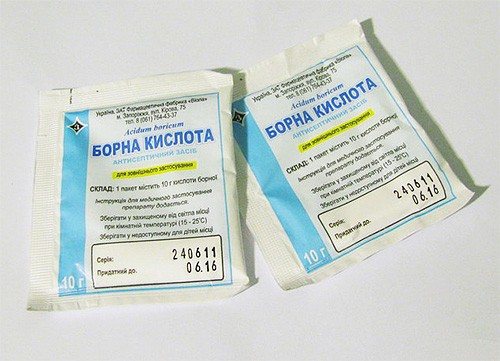

This poison is very effective, since the ants do not die from it immediately, but still manage to return to the anthill and feed the larvae and the queen there. The bait is laid out in a low bowl next to ant nests or on their paths; it needs to be changed every 3-5 days. In about 2-3 weeks, the entire insect colony will die out.
A mixture of crushed hot pepper and dry mustard
Pour the mixture between rows of plants in continuous strips 5 cm wide. Pepper and mustard not only scare away insects with a smell, but also eat away at their chitinous layer upon direct contact. This method is safe for plants and soil. If the farm has only pepper or only mustard - it doesn't matter, they are effective alone.


Soda
Soda powder must be thoroughly covered with the entire nest, especially the inlets. Insects will die from contact with the powder. Soda will not harm the soil, on the contrary: if the soil is alkaline, the soda will make it neutral or slightly acidic. Soda can also be used in combination with dry mustard.


Boiling water
You need to pour it directly into the nests, only carefully so as not to damage the nearby plants. This method is effective, but it is not suitable if the nest is under the roots of a tree or shrub.


Fire and combustible mixtures
It is better to dig the upper part of the nest so that the inner passages are exposed. Pour a combustible mixture (gasoline, kerosene) into the strokes and set it on fire. It is better to do this in the evening and at night, when all the ants are resting in their nest.


Burning out an ant's nest is very effective, but this method can be used either in the spring, when the beds have not yet been planted, or in the fall, when the crop has already been harvested. In summer, instead of burning out, you can use ash - dig up the upper part of the anthill and cover it with hot ash.
Vegetable oil
Water the anthill and the paths along which the insects move. Soiled in oil, insects cannot cleanse themselves from it. The oil film prevents them from breathing, so they quickly die. And the very smell of oil is also unpleasant to ants.


Urine
Some gardeners advise flooding the ant nests with urine. Judging by the numerous reviews, the method is quite working. Probably, ants cannot stand the smell and composition of urine.


Quicklime
She falls asleep in the ant's nest and is filled with water. This method quickly kills insects, but it is dangerous to use it near cultivated plants and trees - you can damage the roots. If the nest is not located in the garden bed, but somewhere near the plantings, then you can safely apply lime.


Salt
Salt helps in the fight against ants, but it must be used very carefully, pointwise. Salt remains in the soil for a long time, and its presence is highly undesirable for plants. If you overdo it with salt, you can be left without a crop for several years.
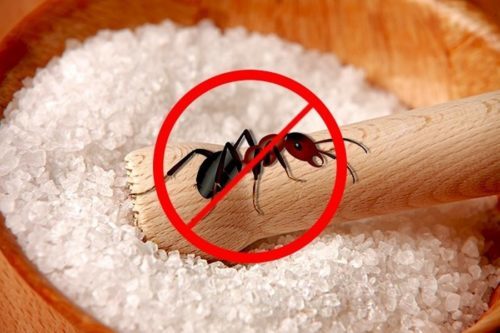

Yeast
Yeast can be poured into the nest in dry form, but it is better to first pour it with a sweet solution (water and sugar). Gardeners justify the effectiveness of this method by the fact that yeast bacteria are quickly activated and transferred to the food reserves of ants, which they store in underground burrows.


Ants collect mostly sweet organic matter in the garden, which yeast bacteria love very much. When the yeast begins to destroy the stocks of ants, they leave their nest in panic in search of a more suitable place.
Sulfur and oregano
Mix sulfur with dried oregano in proportions 1: 2, cover the anthill and dig it up with the ground. This is a good deterrent to keep the surviving ants away from the garden.
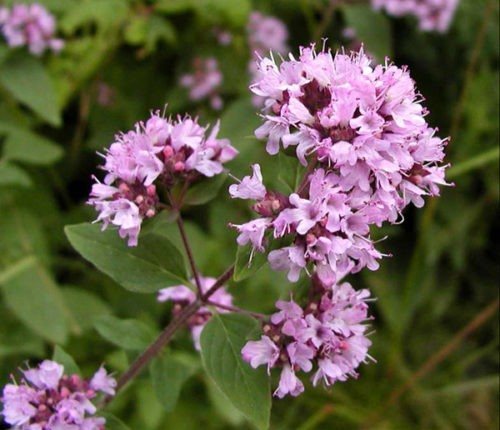

A mixture of kerosene and water
Water and kerosene are mixed 1: 1, the composition is poured into the nests. Before that, it is better to stir up the anthill so that the solution gets into the inner chambers with the larvae and the queen.


A mixture of water, vinegar, shampoo and vegetable oil
This method is more suitable for getting rid of insect nests outside the beds. Pour 10 liters of water into a bucket, pour a bottle of vinegar, 2 glasses of vegetable oil and a bottle of any cheap shampoo. Mix everything well and pour into the ant holes. At the site of the proposed nest, it is better to make deep holes with a peg, and carefully pour the solution into them. After that, cover the treated area with a film for 3 days - the insects will die out.


Ant mixes
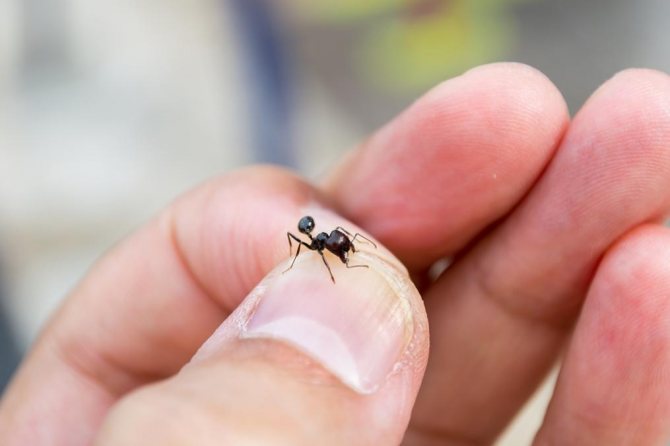

Ants on the plot and in the house
♦ With an egg. Boil medium potatoes and eggs, 3 pieces each. They are peeled, kneaded potatoes, mixed with mashed yolk, a tablespoon of sunflower oil, sugar and a bag of boric acid are added to them. Balls are rolled from the resulting mass and laid out in places where insects accumulate.
♦ With minced meat. A teaspoon of boric acid powder is combined with two tablespoons of minced meat. Balls are sculpted from the resulting mixture and placed at the entrance to the anthill.
♦ Such a solution works well: take 2 tbsp per bucket of water. l. odorous (unrefined) vegetable oil, vinegar and dishwashing liquid. Remove the top layer of soil in place of the ant mink and pour the resulting mixture there. The place is covered with foil and left for a while.


Ants on the plot and in the house
♦ The following composition will help in the fight against summer ants: mix hot pepper powder with a tablespoon of dishwashing liquid and dilute with one liter of boiling water. We keep the mixture for a day, filter and spray the bushes, and water the anthills.
♦ Garlic arrows. If you rub the tree trunk with juice from these arrows, it will become an insurmountable obstacle for ants. Insects crawling up the trunk will return, and those in the crown will jump to the ground. The arrows of garlic, like the tops of a tomato, can be tied to the trunk of a fruit tree.
♦ Sweet ant trap. In half a liter of water, dissolve half a teaspoon of boric acid and a tablespoon of sugar. The resulting solution is poured into a shallow dish (lid or saucer) and the ants are provided with access to the liquid.


Ants on the plot and in the house
♦ Another effective bait. Yeast (1 tablespoon) is diluted with cool water to a thick paste. Add a teaspoon of jam and mix again until smooth. The resulting mixture is spread on cardboard or plastic and placed in places where ants accumulate. You need to cook the yeast mixture a little so that it does not have time to dry. Will not allow the bait to dry, protect from the sun and wind a film in which an entrance for insects is left.
♦ Preparations for mosquitoes "Taiga" or "Komarex" applied to the trunk of a tree will prevent the ants from reaching the aphids for several days.
♦ Another folk remedy that drives ants out of their homes is cinnamon. The cinnamon powder should be scattered around the ant holes and inside. Such a smell, unbearable for insects, will make them leave this place and look for a more comfortable one.
♦ Wool can protect the garden from harmful creeps. It is cut into strips, which are wrapped around the trunk of a tree at a height of 20 cm from the ground with the wool outward. The protective effect of carbolic acid will increase, the pungent smell of which will scare away not only ants.
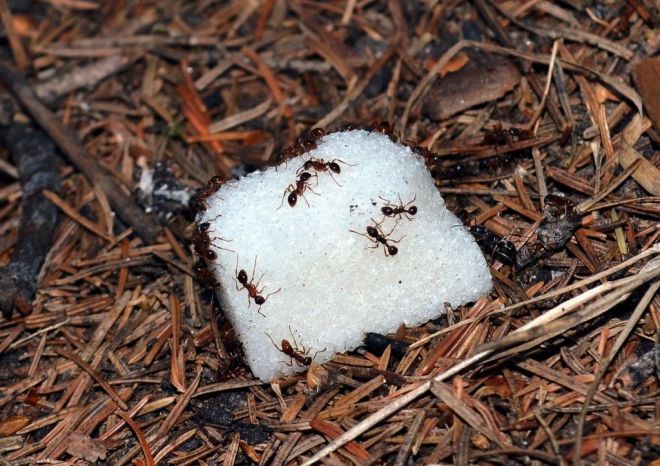

Ants on the plot and in the house
Sometimes ants move into the house and begin to destroy food in the dwelling. To combat them, you can use the following methods:
♦ Spread bait in places where ants congregate, consisting of 50 ml of water, 5-6 g of borax (tetraboric acid salt) and 50 g of sugar;
♦ Sweet ants love jams - especially raspberry, cherry and strawberry jams. Add 20 g of fresh yeast and 5 g of boric acid to 500 g of jam. The ants will happily pounce on the delicacy, but it will most likely be the last for them - most of the individuals will die in 2 days;
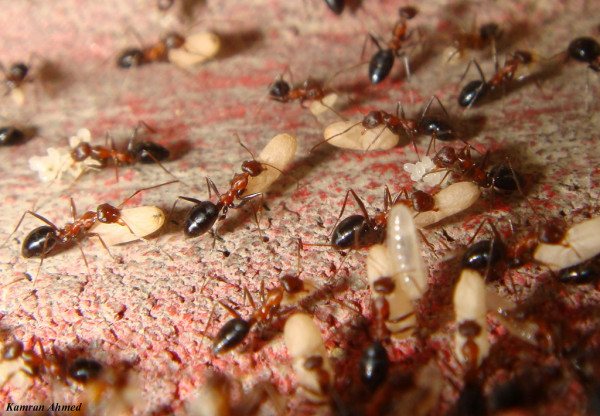

Ants on the plot and in the house
♦ Since chemicals cannot be used in the apartment, it is necessary to use agents that are safe for humans, but unpleasant for insects. For example, such as sunflower oil, elderberry, tomatoes, wild mint, cloves, wormwood and garlic;
♦ Take a piece of old yellowed bacon (100-200 g) and fry it on all sides. Leave the bacon on a plate near the ant tunnels. Believe me, rarely what product is capable of scaring off small pests so much;
♦ Boric acid against ants has been proving its effectiveness for several years. It paralyzes the nervous system of insects and they soon die. It is enough to soak a few pieces of sugar with boric acid and leave them in this form in an open place. Or you can use 2-3 tsp. dry minced meat and soak them with 1 tsp. boric acid.
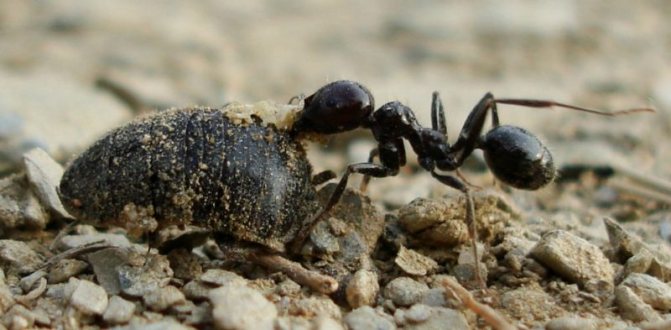

Ants on the plot and in the house
In nature, everything is interconnected. Knowledge of the laws of Nature, the characteristics of horticultural crops and the life of an ant colony allows, first of all, not only to find a suitable way to fight, but competently, wisely, to approach the problem of ants on the site. Moreover, ants are not only our enemies, but also friends; by destroying them completely, you can bring other troubles to your garden, which the little toilers dealt with.
Safe ways to get rid of ants in strawberry and cucumber beds
Ants love cucumbers for their juiciness and strawberries for their sweetness. They attack cucumber and strawberry beds first of all, and at a time when the fruits are already tied and ripen. In this case, it is dangerous to use surface chemical insecticides for your own health.
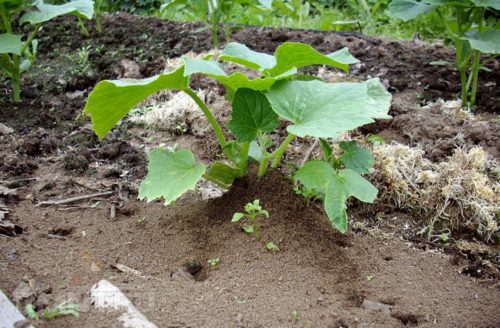

To scare away and destroy ants, you can:
We must not forget about aphids, they must also be destroyed. A good way is to knock it down with the pressure of water from a hose, or lower the branches of plants with aphids in a jar of water for 10-15 minutes so that the insects choke.
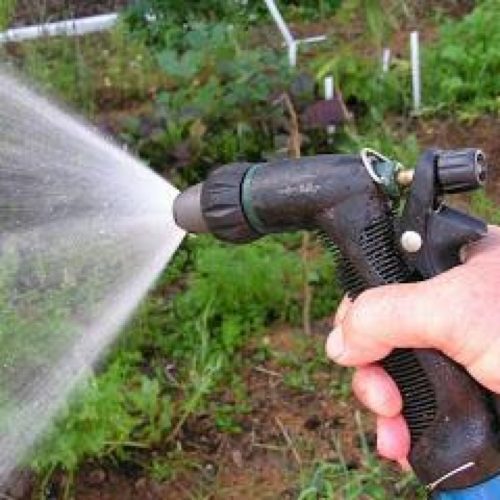

Biological methods of ant control
Biological methods involve using their natural enemies against ants. If there are chickens on the farm, they can be allowed to wander around the garden so that they peck insects. Wild birds can be attracted to your beds with millet or other cereals scattered between the rows. However, for example, it is not recommended to do this on beds with lettuce or strawberries, because wild and domestic birds themselves are not averse to eating berries and juicy greens.
To get rid of small garden ants, you can use large red (forest ants). These are competing species, and forest ants are much stronger than garden ants. If you bring a piece of an anthill from the forest along with forest ants, and dump it on the nest of garden ants, a fight will immediately start between the insects. After a few hours, all the garden ants will be killed, and the red ones will gradually disperse on their own.
How to destroy the hated anthill
Recommendations such as: pour boiling water over the "pile" are often useless, since the liquid does not always penetrate far into the depths (where the uterus lives) through winding tunnels.
It is much better to use other ways to get rid of them:
- Completely fill the habitat with a mixture of hot fresh ash from the stove and salt (soda can be used). Ants will die from chemical burns.
- Cover with strong citric (acetic) acid solution. The same effect.
- Sprinkle a mixture of semolina (or corn grits) with powdered sugar over the surface. After eating the grains, the digestive system of the ants fails.
In any case, after 4 days (maximum) they will all die.
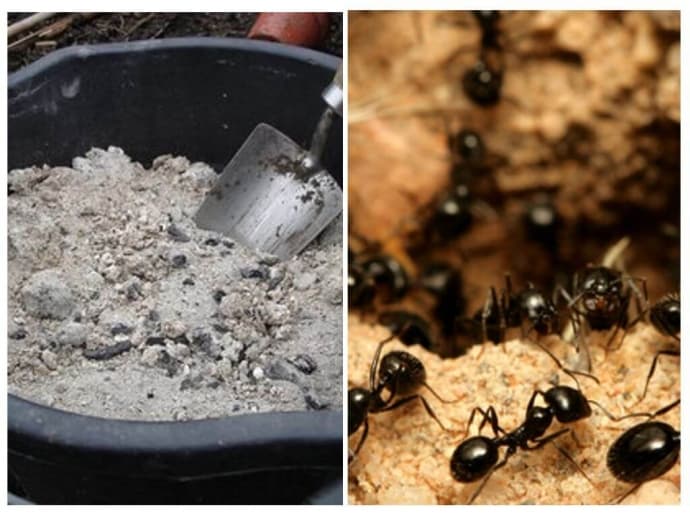

If it's a pity to poison ants
For animal rights activists who do not approve of the killing of living beings, it is recommended to relocate the anthill from the dacha to the forest.
"Houses" are more than 1 meter in diameter and are located rather deep in multi-tiered, you may have to take out at least 10 buckets of fertile soil from the site.
There are a lot of ways to get rid of ant families in greenhouses forever, the same in the beds. For example, many summer residents sow plants between berries and vegetables that scare them away from their habitat: garlic, tansy, mint, anise, mustard. Then the insects leave the chosen territories on their own after a few years.But if you need to remove them urgently: only fast-acting chemicals will help.
Dear summer residents, we invite you to discuss new reliable recipes that you know from the results of application.
Traps and baits
Sticky Trapping Belts
To prevent aphid ants from reaching young shoots of fruit trees and shrubs, special belts are used - Velcro. In this case, the ants will adhere firmly to the surface of the trap. In the next video, an experienced summer resident Vyacheslav Alexandrovich demonstrates one of these sticky belts.
Insidious bait
Such baits attract large numbers of ants with their contents. Then these accumulations are destroyed - they are heated, filled with boiling water, burned, and so on. Let's consider some recipes:
- Soak a sponge for dishes with diluted honey, spread several such baits on ant paths and regularly throw them into boiling water when insects completely stick to the sweet sponge;
- collect water in a jar, add honey or sugar. Place in the area where ants are most active. The doomed sweet tooth crawl there and many, unable to get out, drown in sweet syrup. The rest are also destroyed;
- meat bones, cans with the remains of sweet or meat products - everything that will attract a large number of ants can become baits.
One of the insidious baits is described in the following video.
Means for processing "from the inside"
- You can use solutions of chemicals that are used to spray fruit trees and shrubs. They are poured into the nest through the "main entrance".
- Coniferous concentrate solution - 75%. The weaker one will only scare away insects, but will not destroy.
- Tobacco. It is enough not to sprinkle it too thickly inside the anthill, and the insects will leave.
- "Absolute-gel" (commercially available). The kit includes a special syringe that is used to inject the product into the anthill. The producers explain that females die first of all from this "delicacy", and the colony does not increase in number.


Control methods
So that there are plenty of methods in the greenhouse, but they have different degrees of effectiveness. The site owner will have to select the right one for his case.
Control methods are conventionally divided into the following groups:
- physical,
- chemical,
- combined,
- folk remedies,
- industrial pesticides.
Physical methods. Ant families like wooden structures of greenhouses and greenhouses, as well as old boards, pieces of slate or roofing material and other debris lying on the ground. Keeping greenhouses clean robs garden ants of the comfort of their existence. Digging deep into the soil in the spring and autumn, its frequent loosening in the summer also helps to fight ants. It will not hurt to regularly sprinkle the anthills along with the passages with ash, baking soda or quicklime.
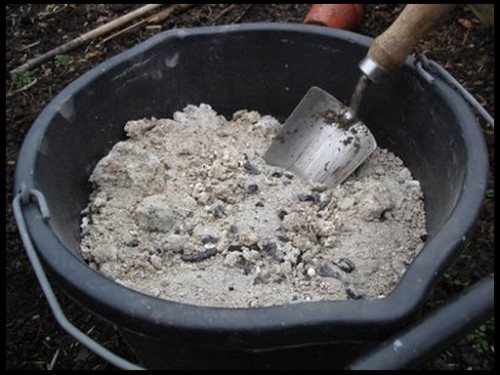

Chemical methods. Poisoned baits were tested here - a mixture of a quarter teaspoon of boric acid, four teaspoons of sugar and two - fermented jam or candied honey. It is put into saucers and installed daily for a month in places where ants live. These places must be inaccessible to children. A safer chemistry method for humans is to repel insects with unpleasant odors. Black ants cannot stand elderberry, mint, wormwood, garlic, anise, mustard, and bay leaf. Concentrating odors in greenhouses (hotbeds) is not difficult - they just need to be tightly closed.
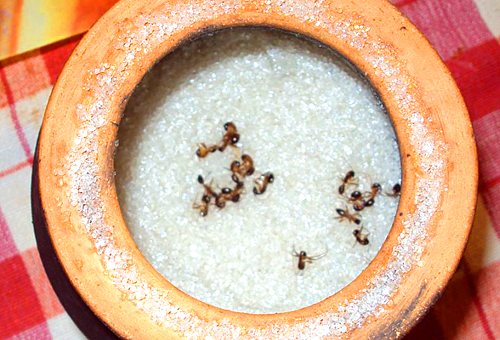

Combined method. Perhaps it can be called a "monument to human cunning" - the construction of a pseudo-anthill. For construction, a leaky container is required (saucepan, can, kettle). The bottom is covered with a dark cloth and sugar is poured abundantly or moistened with jam or thick sugar syrup. This simple device is installed next to a colony of ants.The queen of the brood ant will obviously be flattered by the "comfort" of the new housing, and the "repaired" ones will move into the dishes with her. Such an "anthill" will only have to be removed outside the site further away, or destroyed together with the "tenants".
Folk, safest, means of fighting black ants:
- Garlic. Mix the grated garlic with sawdust and rub the ant lanes with this mixture. You can also pour infusion (a head of garlic on a bucket of water, the duration of the infusion is a day) the anthill.
- Sunflower oil. Destroy the nest by leveling it with the soil. As soon as the ants restore it, fill the renewed nest passages with sunflower oil with a syringe. After the oil has been absorbed into the soil, repeat the procedure.
- A solution of kerosene with water. Pour this solution over the anthill and trails (two tablespoons of kerosene in a bucket of water). Can be replaced by pouring a mixture of sunflower oil with table vinegar (concentration - 50 g of oil with 9% vinegar).
- Sprinkle anthills with pepper, dry mustard, ash.
- "Soldering" insects. Prepare a drink for “sweet lovers”: add yeast to the old jam and wait until it ferments. Put in a greenhouse. Having tasted the drink, the ants, after several such visits, will "forget" about the nutrition of the younger generation, and the anthill will die. A mixture of honey with brewer's yeast (2: 1) is also suitable for a drink.
- Ant trap. For this purpose, an empty bottle is taken, which is coated from the inside with jam or sweet syrup. As soon as insects accumulate in it, fill them with boiling water.
If the described methods turned out to be ineffective, then chemical agents, of which there are also many, will help to get the ants out of the greenhouse. However, such disinfection is poisonous and dangerous for pollinating bees, pets, children and the gardener himself!
Effective methods of getting rid of ants in the greenhouse without harming the plants
For those who do not want to have ants in their greenhouse, there are many ways and means to get rid of uninvited guests.
General recommendations
Ants love the wooden structures of greenhouses, old boards, roofing felt, slate and other rubbish that can often be found in the room. Therefore, you need to strive to maintain cleanliness, prevent littering, and regularly paint wooden structures with lime mortar. In autumn and spring, dig deeply into the soil, disrupting the paths of insects. In summer, the soil should be loosened and periodically sprinkled with wood ash, baking soda or lime. If an anthill is found, you can simply load it with a shovel into a basket or bucket and take it outside the site.
Chemicals
For lovers of cardinal methods of dealing with the use of chemistry, it would seem, there are many drugs. But upon closer examination, it turns out that they mainly belong to two groups.
Group of drugs based on chlorpyrifos
This chemical compound is included in a large number of broad-spectrum insecticides around the world. Entering the insect's body through the respiratory tract, it has a paralyzing effect on its nervous system. Has a long-term effect (up to one - two months), is removed from the soil in 100-120 days. In its pure form, it belongs to the second hazard class, and in the composition of preparations - to the third - fourth classes, depending on the concentration.
Table: preparations for fighting ants based on chlorpyrifos
| A drug | Release form | Hazard Class | Consumption rate | Validity period | Validity |
| Absolute | Gel, bait containers | 4 | 12.5 ml per 3 m2; 2 traps per 10 m2 | 10-14 days | 1-2 months |
| Delicia | Powder | 10 g / m2 | |||
| BROS | Granular powder | N / a | After the first application | Up to two months | |
| Spray can | |||||
| Trapping belt | Up to three months | ||||
| House glue trap |
A group of drugs based on diazinon
Diazinon blocks the production of an enzyme that is responsible for the functioning of the insect's nervous system.It is actively absorbed by the root system and, as a result, protects plants for three weeks not only from ants, but also from other harmful soil insects - bears, beetles, etc.
Table: a group of drugs for fighting ants based on diazinon
| A drug | Release form | Hazard Class | Consumption rate | Beginning of action | Duration of action |
| Thunder-2 | Granules | 3 | 1-3 grams per anthill | 2-4 days | 2-3 weeks |
| Medvetox | 20 grams per 10 m2 | 3-5 days | |||
| Muravyin | |||||
| Ant-eater | Emulsion concentrate | 1 ml / 10 l of water per 5 m2 | 1-2 days | ||
| Muratox | 3 days | ||||
| Muracid | Water emulsion | 1 day |
Other Ant Control Drugs
In addition to drugs based on diazinon and chlorpyrifos, there are also combined and other formulations:
- The great warrior is a gel containing both of the above-described active substances. Decomposed into pieces of cardboard in the form of droplets at a rate of 30 mg / m2 will give an effect on the second day.
- Anti-ant - borax-based powder, produced in sachets or blisters, begins to act on the fifth or sixth day at a consumption rate of one sachet per 2 m2.
- Any other broad-spectrum insecticides - Karbofos, Inta-vir, Raptor, Clean House and others.
Folk remedies
If you do not want to use chemistry in your greenhouse, you can use folk remedies for fighting ants, of which there are a large number. Basically, they have a deterrent effect and do not harm plants. Smells that ants cannot tolerate:
- kerosene;
- garlic;
- carbolic acid;
- ordinary and bleach;
- elder;
- mint;
- cloves;
- tops of tomatoes;
- oregano, etc.
Using these "flavors" in the greenhouse, you can ward off annoying insects for a long time. Often they make various baits, taking advantage of the fact that ants love sweets. Bottles with sugar or honey syrup are laid out in the greenhouse, and later, when they are filled with sweets adhering to the walls, they are removed from the site.
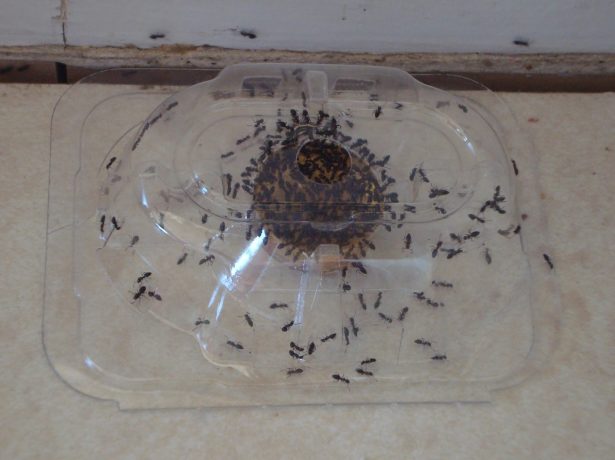

Homemade ant traps can be made from available tools
A mixture of honey and brewer's yeast is attractive and at the same time destructive to ants. Filling the paths and the anthill with sunflower oil can also force them to leave the area.
Video: how to get rid of ants in a greenhouse
Despite the controversy of theorists, practical agrarians most often do not want to put up with the presence of ants in the greenhouse and on the site. And they have a large selection of both chemical and folk remedies to combat these insects.

